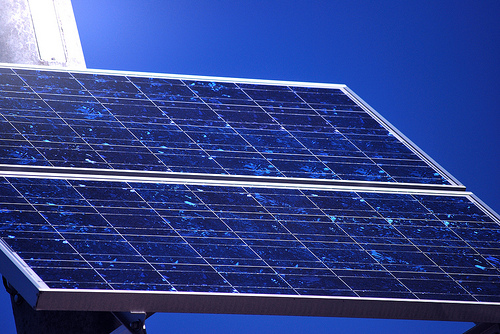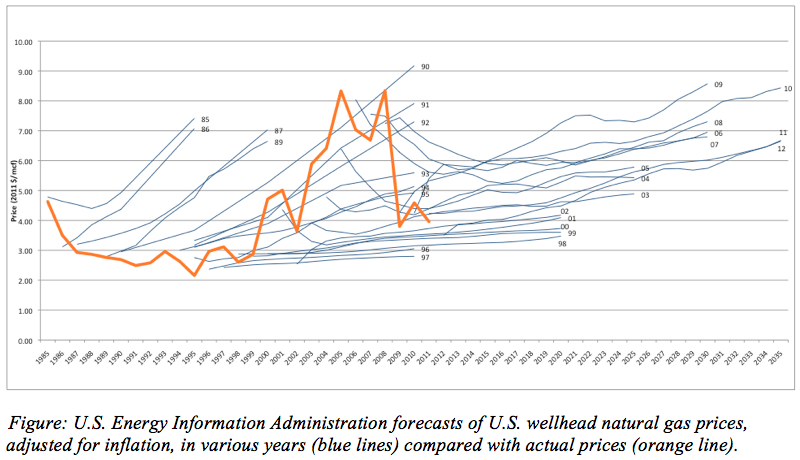Solar advocates were popping corks when a New Year’s Eve ruling by an administrative law judge in Minnesota said that distributed solar arrays were a more cost-effective resource than natural gas to meet Xcel Energy’s peak power needs. The energy media were aflutter for weeks, but many missed the bigger significance.
If solar trumps gas for peaking power in Minnesota, there’s little reason to be building new natural gas peaking capacity anywhere in the country. Ever again.
Let’s look at the 5 reasons why solar’s triumph over natural gas is likely to stick:
Solar Wins on Cost
It’s not the first time solar has beaten electricity generated with natural gas on cost. In 2013, the city utility in Palo Alto, CA, signed long-term contracts for solar energy with prices significantly lower than natural gas. But in 2014, the cost of electricity from solar (for meeting peak needs) is winning in Minnesota.
In the long run, the cost of solar keeps falling, whereas the cost of natural gas electricity is likely at its historical minimum, especially as demand keeps rising for use of natural gas in other sectors without ready alternatives, like building heat.
Solar Wins on Predictability
The low recent price of natural gas has made it easy for short-sighted regulators to argue natural gas power will be cheap in the long run, but history suggests that volatile, not inexpensive, is the proper adjective. The following chart from the Rocky Mountain Institute shows the price history and widely varying price forecasts for natural gas over the past two decades.
This winter is a perfect illustration. Natural gas inventories are dropping to their lowest levels in a decade due to the persistent cold, as home and business heating race ahead of normal levels. The laws of supply and demand are likely to cause a jump in gas prices, or as energy expert Robert Rapier notes:
I expect it will garner some attention if we drop below 1 tcf [of natural gas inventories] next week since it hasn’t happened in over a decade. This would put the US about one more cold snap from sending natural gas prices to the moon.
It’s the major drawback in relying on gas for electricity generation especially when the alternative – solar power – offers a guaranteed fixed price for decades.
Solar Wins on Reliability
Because energy from solar is typically interconnected at the low-voltage, distribution level of the electric grid, the solar energy can provide key support services, such as maintaining the constant grid voltage level. Distant gas (or other) power plants can’t provide this service, which is only technically feasible close to load. The winning solar proposal in Minnesota will place 100 MW of solar in 2-10 MW discrete projects at existing utility substations, able to provide power and grid support where it’s needed.
Solar Wins on Infrastructure
One reason solar won in Minnesota is that the submitted costs for competing natural gas power plants didn’t include the projected cost of grid upgrades, such as new transmission lines, needed to deliver power to customers. Because the distributed solar projects will be sited at existing utility substations, they won’t require new infrastructure. (Minnesota’s recently completed value of solar methodology illustrates the financial value to utilities of avoiding new infrastructure). Just like the price certainty of solar electricity, avoiding potential pitfalls with expensive, new electrical infrastructure upgrades gives the nod to distributed solar projects.
It’s not just infrastructure on the electricity system to consider. Building a new natural gas power plant means new gas infrastructure to fuel it. But by 2050, Minnesota utilities need to significantly reduce their reliance on carbon-based fuels to meet the state’s 80% greenhouse gas emission reduction target. Utilities will be stranding ratepayer investments if they build new gas plants and pipelines – with a 50-year useful life – that will have to be retired in the next 35 years.
Solar Wins on Economic Benefits
Every megawatt of solar generates approximately a quarter million dollars in economic activity and eight jobs, compared to about 1 job per megawatt from natural gas. The proposed 100 MW solar project, if installed in 2015, would create an estimated 2,331 jobs and $260 million in economic activity, according to NREL’s JEDI economic model.
The comparison is almost meaningless, however, since Xcel’s competing natural gas projects were planned for North Dakota, not Minnesota. Not only is solar a better investment per megawatt, it’s a local resource that keeps Minnesota ratepayer dollars in Minnesota.
Every community can make the same calculation. Palo Alto, for example, gets its low cost solar energy and keeps the economic benefits close, too. The contracted solar projects are within a two-hour drive of the city’s electric customers.
Though not the case with the proposed Minnesota projects, distributed solar can double down the economic opportunity with local ownership. Community-based solar installations, such as the one at the Wright-Hennepin cooperative near Minneapolis, or those crowd financed by companies like Mosaic (see our recent interview with president Billy Parish), mean that not just the construction cost but the solar revenue will stay local.
The law judge’s ruling applies to a single case of solar v. gas, but the economics of solar continue to improve relative to natural gas. It’s likely that the victory of solar over gas in Minnesota is a New Year’s resolution that will stick.







